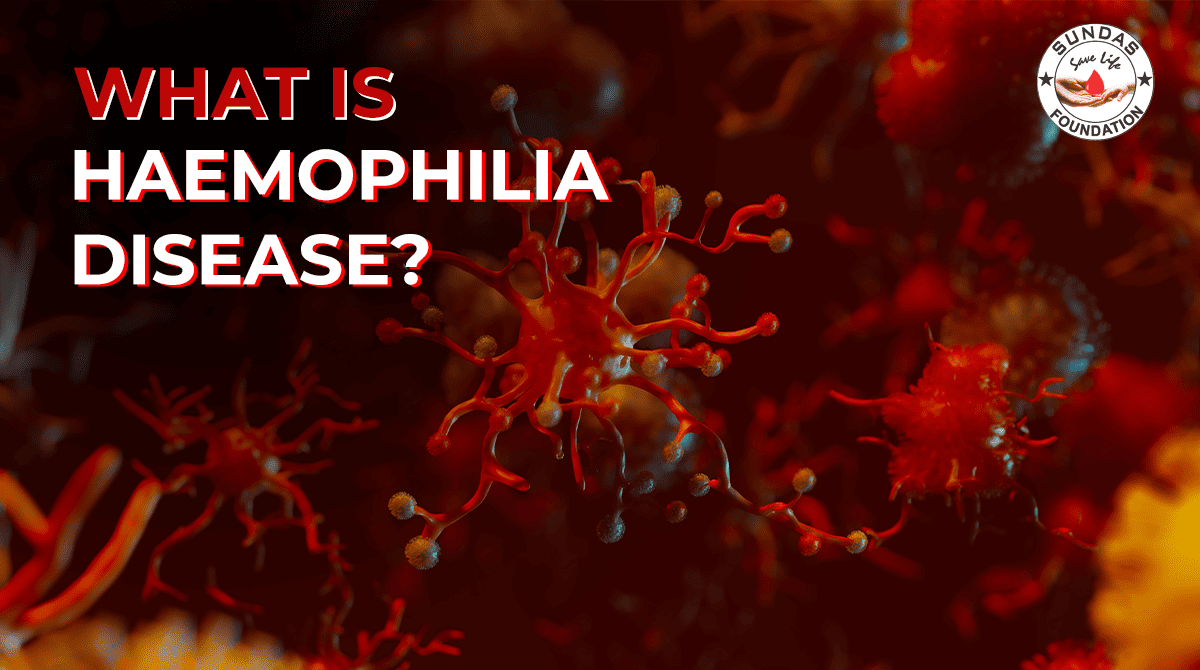
What is Hemophilia? - Causes, Symptoms, Diagnosis, and Awareness
Overview
Hemophilia is a rare genetic disorder that affects the blood's ability to clot. Individuals with hemophilia often experience excessive bleeding, even with minor injuries, and may have difficulty stop bleeding after an injury or surgery. Understanding hemophilia, its causes, symptoms, diagnosis, and how it can be managed is essential for individuals and communities to raise awareness of this condition.
In this article, we will explore the meaning of hemophilia, its impact on health, how it's diagnosed, and why it's rare in females. We'll also define related keywords like "hemophilia disease," "hemophilia awareness," and "diagnostic test for hemophilia" to provide a comprehensive understanding of this condition.
What Is Hemophilia Disease?
Hemophilia is a genetic disorder where the blood doesn't clot properly. The condition occurs due to a deficiency of certain clotting factors, such as factor VIII or factor IX, which are essential for blood clotting. As a result, people with hemophilia may experience spontaneous bleeding or prolonged bleeding after an injury or surgery.
There are two main types of hemophilia:
- Hemophilia A: This is the most common type and is caused by a deficiency of clotting factor VIII.
- Hemophilia B: Known as Christmas disease, this form is caused by a deficiency of clotting factor IX.
Both types of hemophilia are inherited in an X-linked recessive manner, meaning the defective gene is carried on the X chromosome. This is why hemophilia is much more common in males than in females.
Hemophilia Meaning in Urdu
In Urdu, hemophilia is referred to as "khoon ki kami" or "khoon bahny ki beemari". This term encompasses the meaning of the disease, which involves problems with blood clotting and results in excessive bleeding. Understanding the local terminology can help individuals in Urdu-speaking communities better understand the disease and seek appropriate medical care.
Hemophilia Definition
The definition of hemophilia can be summarized as a genetic disorder that impairs the blood's ability to clot properly. This leads to abnormal bleeding, which can be spontaneous or occur after injury, surgery, or dental procedures. Hemophilia can be classified based on the specific clotting factor that is deficient, as well as the severity of the disease (mild, moderate, or severe).
In severe cases, people with hemophilia may bleed into their joints, muscles, or internal organs, which can lead to permanent damage if not treated promptly.
Symptoms of Hemophilia
The symptoms of hemophilia can vary from mild to severe, depending on the level of clotting factor present in the blood. Common symptoms include:
- Excessive bleeding from cuts or injuries
- Unexplained or spontaneous bleeding (e.g., nosebleeds, gum bleeding)
- Bruising easily
- Joint swelling and pain due to internal bleeding
- Blood in urine or stool
In severe cases, people with hemophilia may experience internal bleeding in areas such as the brain, which can be life-threatening. Early diagnosis and treatment can significantly reduce the risks associated with these symptoms.
Why Hemophilia Is Rare in Females
Hemophilia is rare in females because it is typically inherited in an X-linked recessive pattern. Males have only one X chromosome and one Y chromosome, while females have two X chromosomes. A male with a defective X chromosome will always show symptoms of hemophilia because he lacks a second, potentially healthy X chromosome to compensate.
In females, however, if one X chromosome carries the hemophilia gene, the other X chromosome usually carries a normal clotting factor gene. As a result, females are typically carriers of the condition but do not usually experience the symptoms of hemophilia. For a female to develop hemophilia, both of her X chromosomes must carry the defective gene, which is extremely rare.
Diagnostic Test for Hemophilia
The diagnostic test for hemophilia involves measuring the levels of clotting factors in the blood. The most common diagnostic tests include:
- Activated Partial Thromboplastin Time (APTT): This test measures how long it takes for the blood to clot. In people with hemophilia, the clotting time will be longer than normal.
- Factor VIII and IX Assays: These specific tests measure the level of clotting factors in the blood. A deficiency in factor VIII indicates hemophilia A, while a deficiency in factor IX points to hemophilia B.
- Genetic Testing: This test can confirm the presence of the gene mutation responsible for hemophilia. It can help determine whether a person is a carrier, especially in females who may not show symptoms but can pass the condition on to their children.
Early diagnosis through these tests allows for timely treatment and management of hemophilia, reducing the risk of complications.
Hemophilia Test
The hemophilia test involves a series of blood tests that assess clotting function. As mentioned, factor assays are critical to determining the specific type of hemophilia a person has, while APTT can provide initial indications of clotting problems. When hemophilia is suspected, the following steps are typically taken:
- Physical Examination: A healthcare provider will assess any visible symptoms, such as unexplained bruising or bleeding.
- Blood Tests: The patient will undergo clotting tests like APTT and factor assays.
- Genetic Counselling: For families with a history of hemophilia, genetic counselling can help predict the likelihood of the disease being passed on to future generations.
These tests not only confirm the presence of the disease but also guide the course of treatment for affected individuals.
Hemophilia Awareness
Hemophilia awareness is crucial for educating the public about the symptoms, causes, and treatment options for this rare disease. Many people are unaware of the condition, leading to delays in diagnosis and treatment. By increasing awareness, we can ensure that individuals with hemophilia receive the proper care they need.
Here are some important aspects of hemophilia awareness:
- Public Education: Awareness campaigns can help the public recognize the symptoms of hemophilia and seek medical attention.
- Support Networks: Building networks for individuals with hemophilia and their families can provide emotional support and practical advice on managing the disease.
- Access to Treatment: Advocacy for better healthcare services and access to treatment options is essential for improving the quality of life for people with hemophilia.
Management and Treatment of Hemophilia
While there is no cure for hemophilia, the condition can be managed with appropriate treatment. The most common form of treatment involves the infusion of clotting factor concentrates to replace the missing clotting factor in the blood. Other management strategies include:
- Prophylactic Treatment: Regular infusions of clotting factors to prevent bleeding episodes.
- On-Demand Treatment: Infusions are given only when bleeding occurs.
- Physical Therapy: To prevent joint damage due to internal bleeding.
- Gene Therapy: An emerging treatment that aims to introduce a functional copy of the missing gene to help the body produce its clotting factor.
With proper treatment and ongoing care, people with hemophilia can lead active, fulfilling lives.
Conclusion
Hemophilia is a rare but serious genetic disorder that affects the blood's ability to clot. It is crucial to understand hemophilia's meaning, causes, symptoms, and diagnostic tests to raise awareness and provide proper care. With ongoing research and advances in treatment, individuals with hemophilia can live longer, healthier lives. Through awareness campaigns and genetic counselling, we can ensure that people with hemophilia receive the support and care they need to manage the condition effectively.

